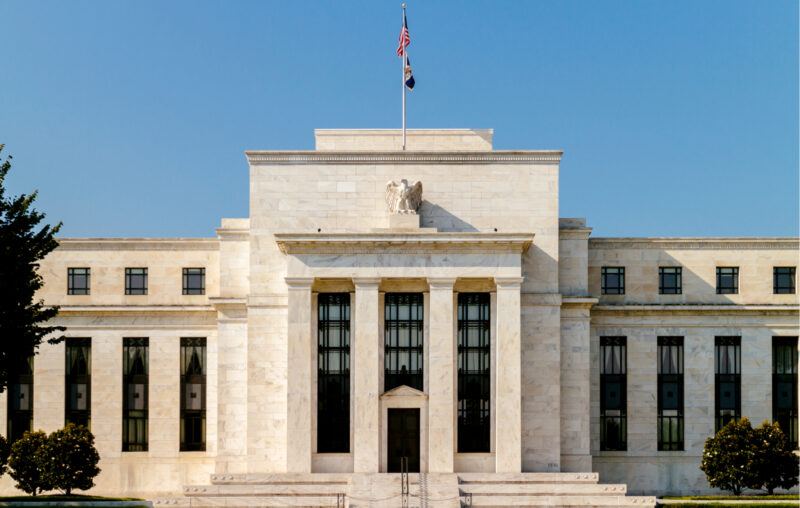Making Money Lawful

In a forthcoming book titled Money and the Rule of Law: Generality and Predictability in Monetary Institutions, Peter Boettke, Daniel Smith, and I confront one of the most important public policy dilemmas of our time: Central banks, and especially the Federal Reserve, have become a law unto themselves. Discretionary monetary policy has delivered neither macroeconomic stability nor lawful behavior. It’s time to end our experiment with central bank discretion and embrace true rules. The book, which has already received notable endorsements from respected macroeconomists and former Fed officials, is available for pre-order.
Fans of contemporary central banking will no doubt retort that they do not advocate discretion. Instead, they prefer “constrained discretion,” which is supposedly a very different thing. In a constrained discretion monetary regime, “the central bank retains some flexibility in deemphasizing inflation stabilization so as to pursue alternative short-run objectives such as unemployment stabilization. However, such flexibility is constrained to the extent that the central bank should maintain a strong reputation for keeping inflation and inflation expectations firmly under control.”
While defenders of constrained discretion recognize the value of rules for monetary policy, they also insist on the flexibility to deviate from rules when exigent circumstances, such as nascent financial panics, require. Constrained discretion is supposed to combine the virtues of both rules and discretion, while eschewing their vices.
Nonsense, we say. Constrained discretion can’t deliver effective and lawful monetary policy. Contingent on having a central bank, we need a real monetary rule–one that central bankers can’t choose to ignore, and for which there are penalties if broken.
For all its talk of constraints, constrained discretion is really just discretion. All the information and incentive problems that plague discretionary monetary policy–and there are many–also plague constrained discretion. This is because they’re fundamentally the same thing.
While central bankers may find it convenient to practice rule-like behavior, such as the Fed’s adoption of a 2% inflation target under Chairwoman Janet Yellen or its subsequent switch to average inflation targeting under Chairman Jerome Powell, such practices do not come close to adherence to a true rule. If Fed officials retain the right to decide when to deviate from a rule, then they are not constrained by the rule. It is a pseudo-rule.
Discretionary monetary policy works poorly. On the information side, there is an insuperable knowledge problem. For monetary policy to create macroeconomic stability, it has to result in allocatively neutral demand stabilization. This means continuously maintaining monetary equilibrium: adjusting the supply of money such that there’s enough in the economy to meet the demand for cash balances, at money’s going purchasing power (the price level). But top-down fiat money systems can’t reliably do this because there’s no feedback mechanism to give monetary policymakers the necessary knowledge to engineer monetary equilibrium. Hence, it is impossible for discretionary policy to create systematic macroeconomic stability.
There are a host of lesser informational difficulties with discretionary policy–choosing goals, picking policy instruments, measuring the relevant macroeconomic variables, etc.–but these are all secondary. Due to the knowledge problem inherent in trying to engineer monetary equilibrium, discretionary central banking fails on its own terms.
There are also serious problems with discretionary central banking on the incentive side. Despite its lauded independence, the Fed is among one of the least politically independent central banks in the world. This creates a host of frictions that predictably result in suboptimal policy.
Politicians, such as presidents and members of Congress, have a strong incentive to pressure Fed officials to satisfy electoral or other political goals, rather than economic ones. An obvious example is the Fed’s bizarre and completely unjustified decision to prop up municipal credit markets following Covid-19.
There are also incentive problems stemming from inside the Fed itself. Central banks are bureaucracies, and bureaucracies behave in all sorts of ways that create benefits for bureaucrats while forcing society at large to bear the costs.
In addition, incentive problems predictably result in Fed officials responding too aggressively to nascent financial turmoil. Nobody wants to be remembered as a monetary policy maker who presided over a financial meltdown. Thus, whenever there are liquidity problems in markets that show the slightest hint of growing into insolvency problems, Fed officials stomp on the gas. For the past 40 years, often in conjunction with the Treasury, the Fed bailed out major financial institutions when the going got tough. The predictable result of perpetual bailouts is institutionalized moral hazard in the financial system.
When you let financiers gamble with other people’s money, don’t be surprised when they take on too much risk. From their perspective, it’s a coin flip: heads and they make incredible profits, tails and they get taxpayers to cover their losses. Thus the Fed is a major cause of financial crony capitalism.
Only a genuine monetary rule can solve these problems. Suppose the central bank is forced to follow a rule that specifies the future path of a nominal anchor, such as the price level or (better yet) nominal income. In terms of information, the central bank is no longer trying to engineer monetary equilibrium. Instead, it creates a baseline for economic activity. Building on the strong foundation created by the rule, the market can form more accurate expectations and increase economic coordination through improved contracting. In terms of incentives, politicians can’t meddle, and central bankers can’t distribute unnecessary largesse, if monetary policy is constrained by a rule. Given that the Fed exists, and isn’t going anywhere soon, the best course of action is to ditch the “discretion” part of “constrained discretion.”










